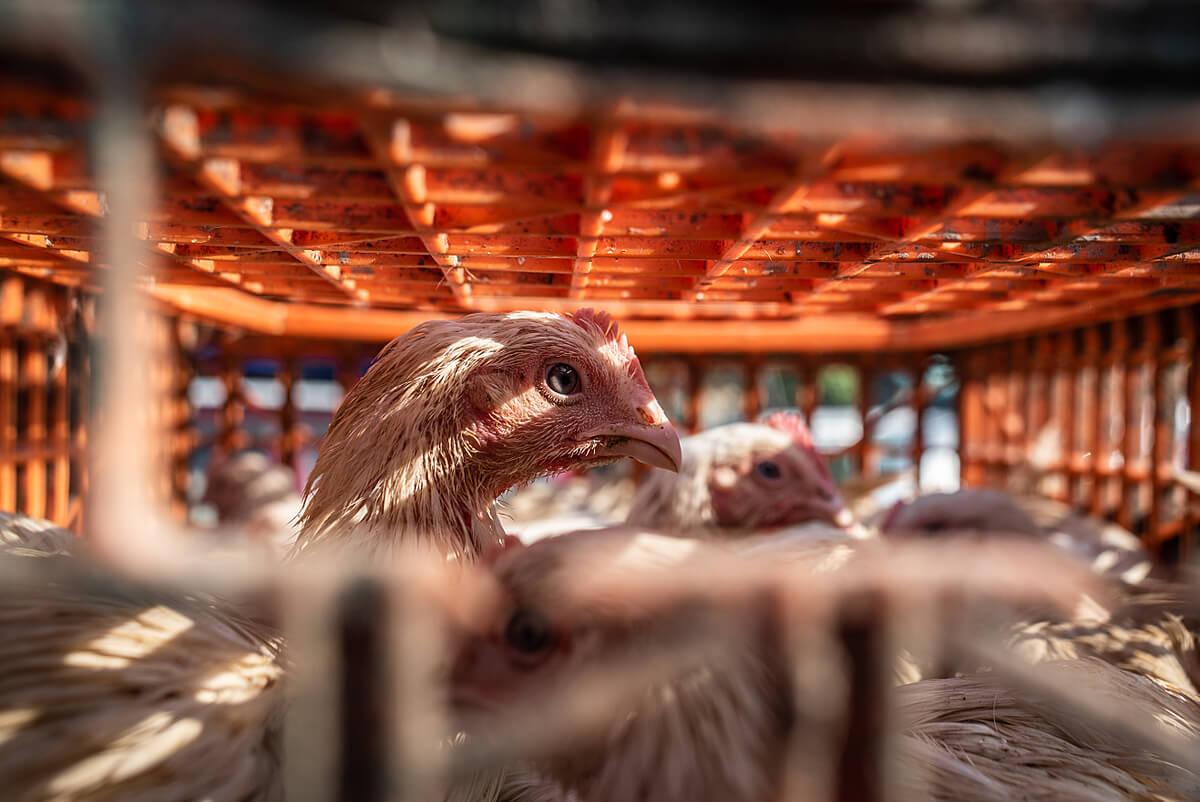The Ghazipur meat market is a wholesale poultry and fish market located at the border of the Indian states of Delhi and Uttar Pradesh and is situated next to one of Ghazipur’s largest landfills. With approximately 88 wholesale poultry shops and about 250 fish shops, it is one of India’s largest meat and fish markets. This “mandi” as it is known in the Hindi language, supplies meat to almost all areas in India’s National Capital Region.
Truckloads of poultry and fish start arriving at the market as early as 5:30 AM. Each poultry truck carries live birds in crates stacked on top of one another, which are then distributed amongst the market’s numerous shops. Many of the birds are sold live to smaller vendors who resell them at their local markets. The remaining birds are butchered and slaughtered in the Ghazipur market itself, and sold whole or cut into smaller pieces, separated and sold by weight and body parts.
The birds are transported to the market and kept in metal cages or plastic crates and housed in unhygienic, unsanitary conditions. Many birds show signs of skin diseases, stress, and trauma. As they await their turn, the birds have a clear view of the butchering and slaughtering process.
The fish market stalls sell a variety of fish to small local vendors and individual consumers. Dead fish are transported to the market and stored in ice-filled polystyrene (Thermocol) boxes, where they are kept looking fresh and their decay delayed by the constant use of ice and water. Live fish are kept in small tanks, drums, or buckets, where many are injured as they struggle for space within these containers. The market’s cement floor is a stagnant, wet, slippery mix of water from melted ice, fish bodily fluids, and the dirt from workers’ and customers’ shoes.

